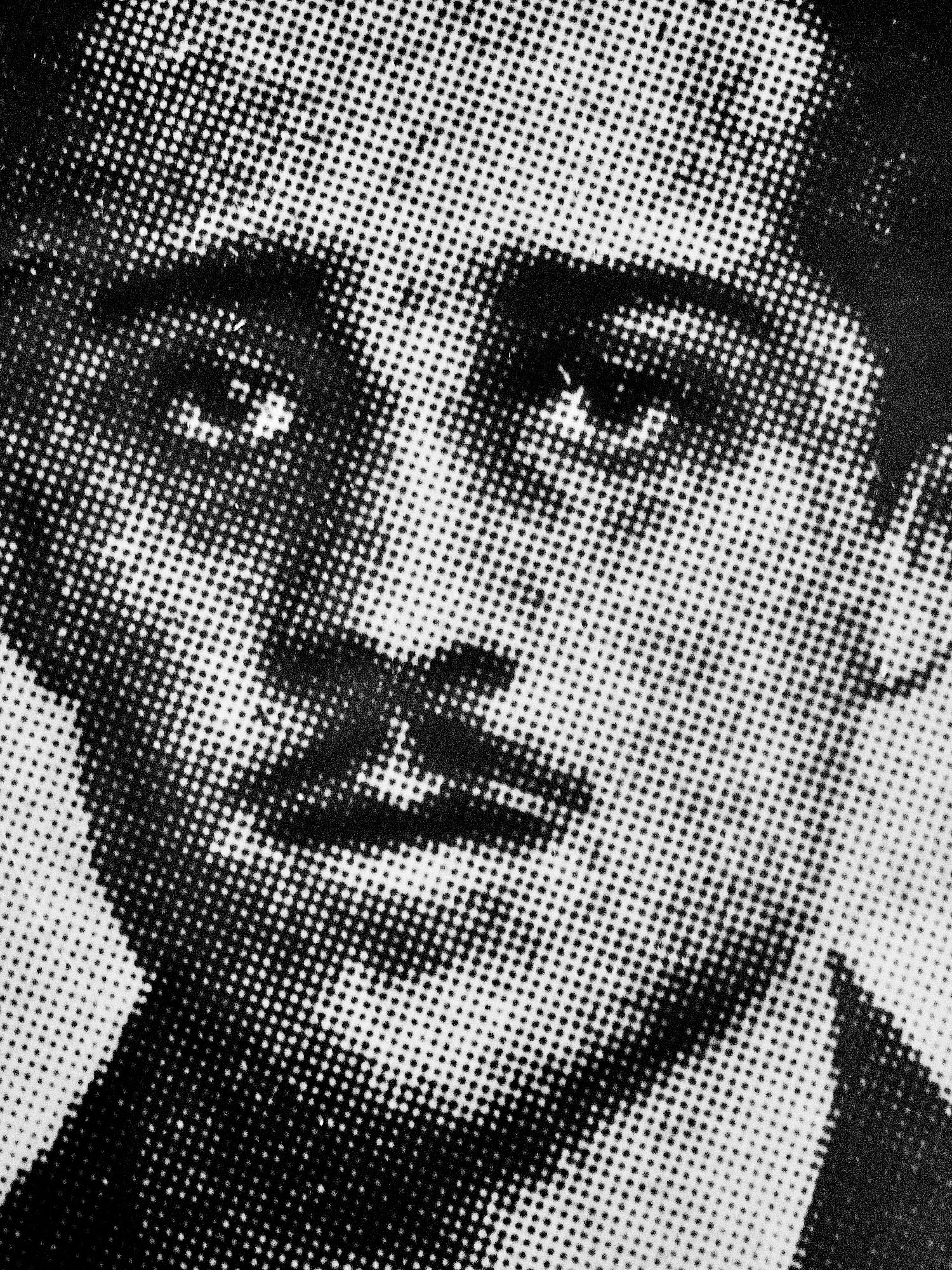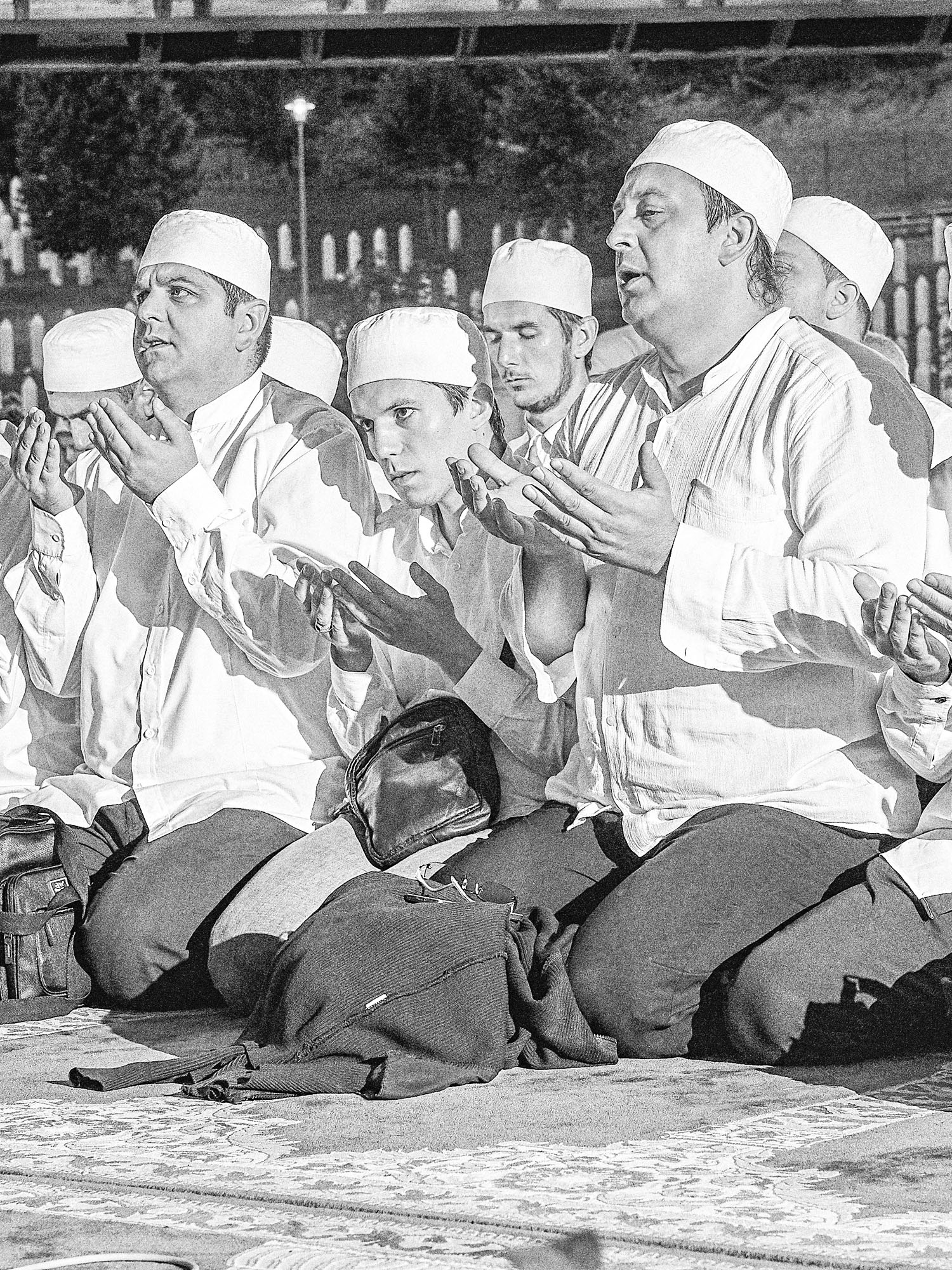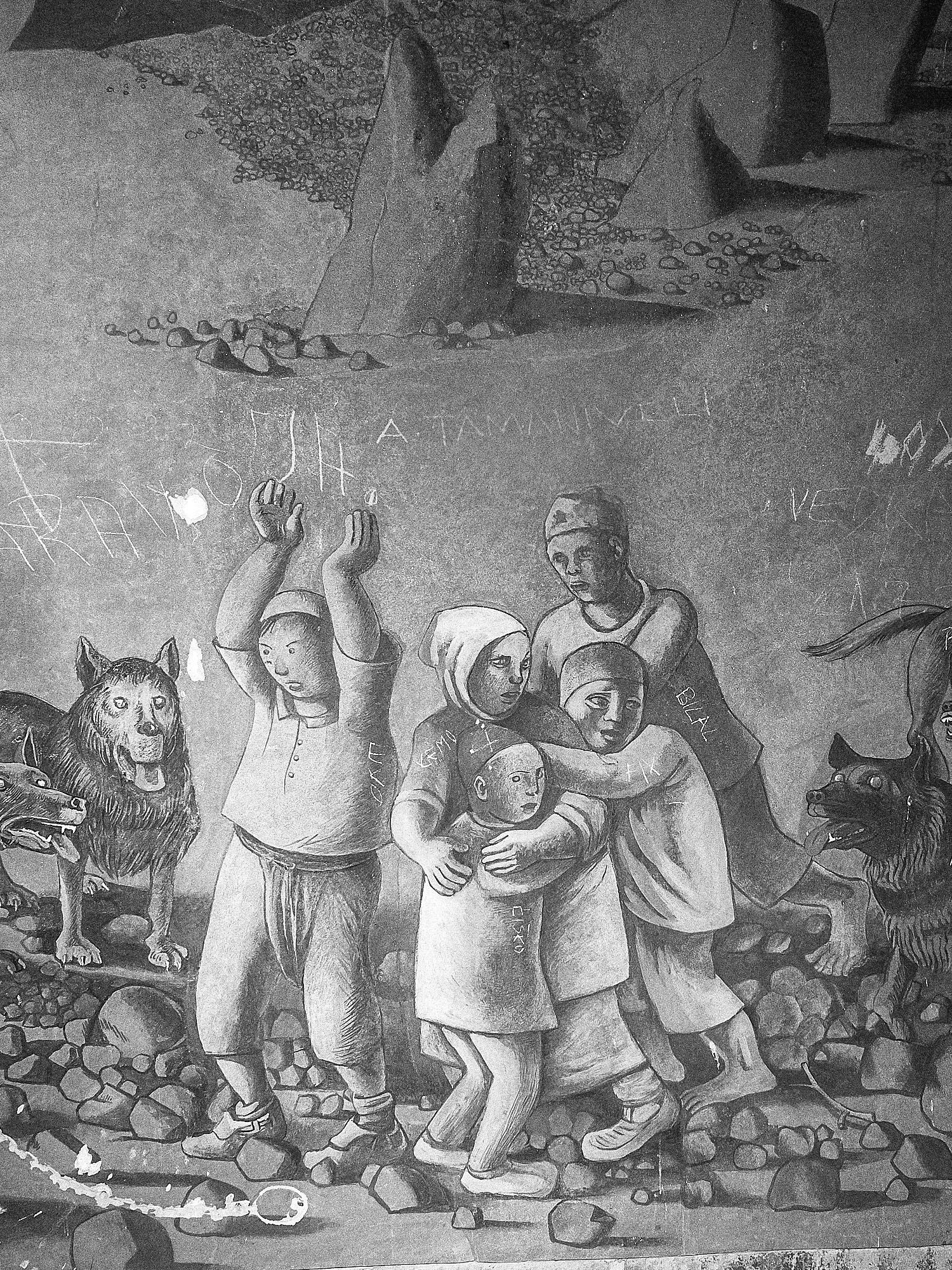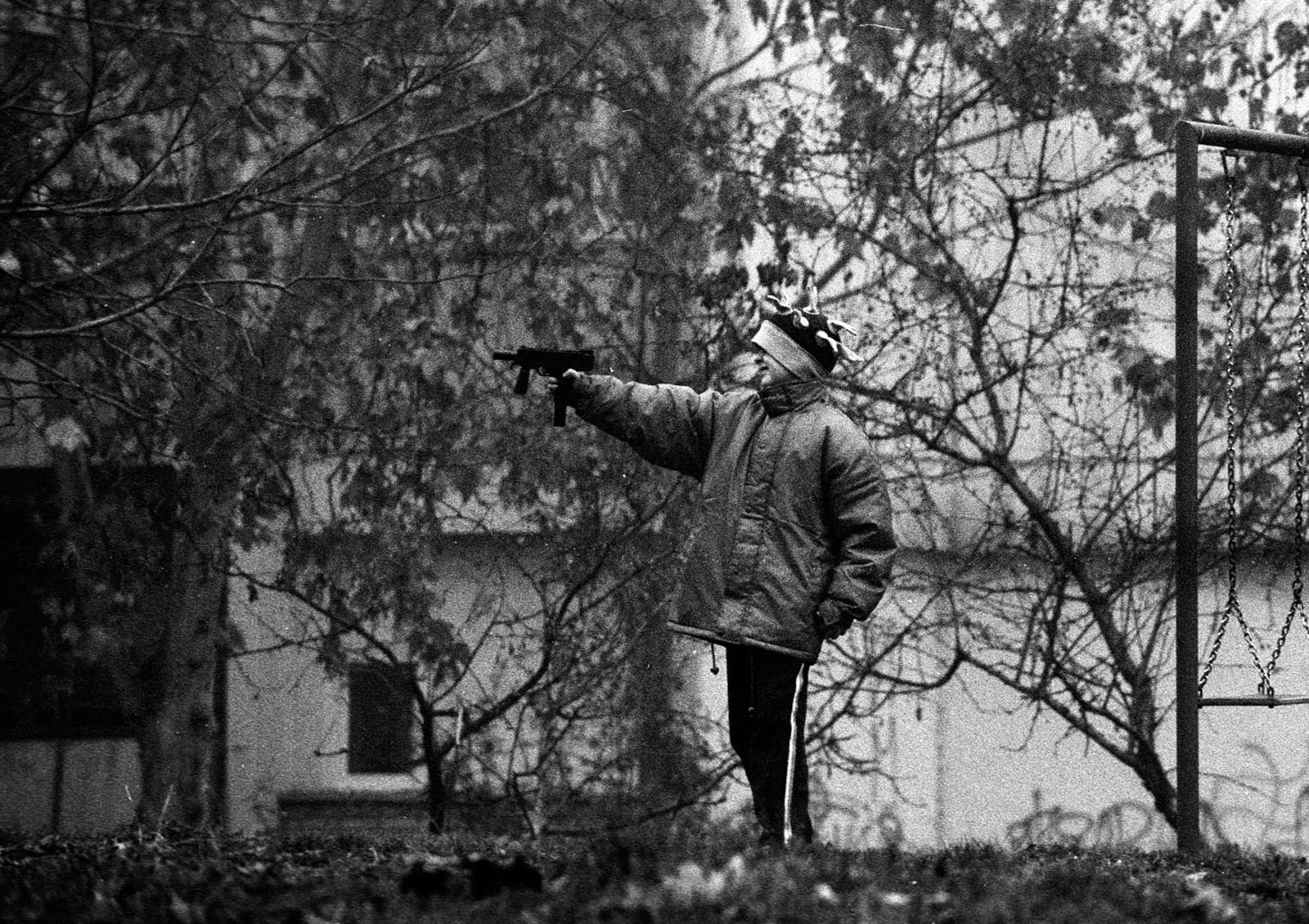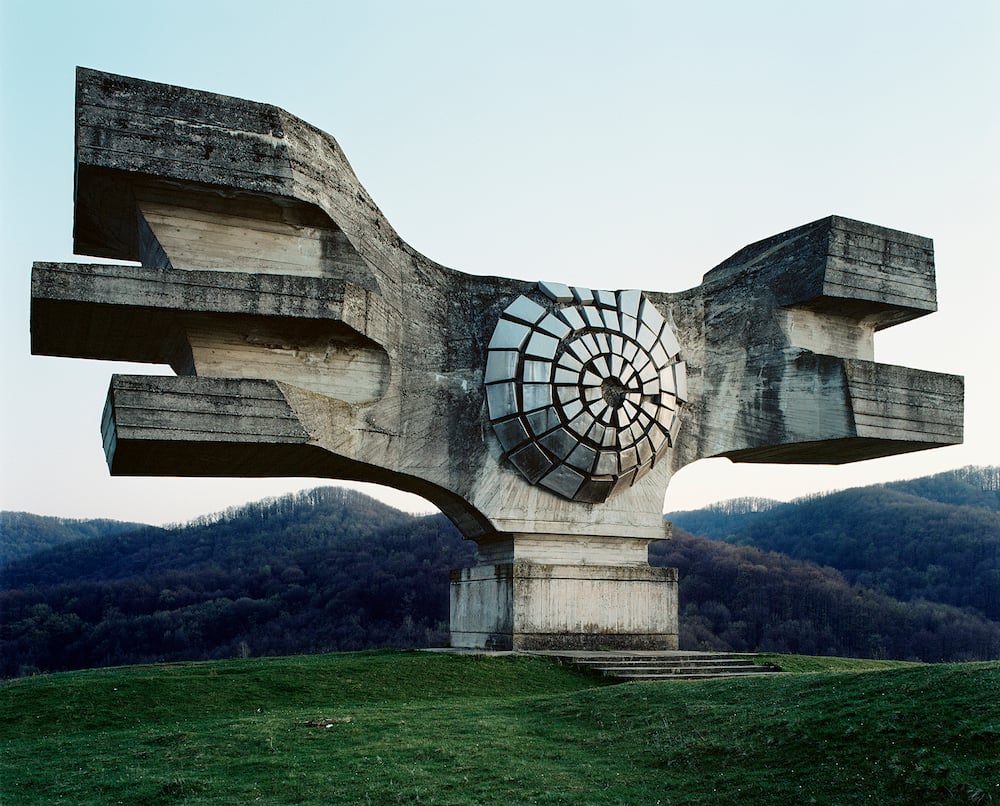‘The country of my youth didn’t exist anymore’: capturing the final months of Yugoslavia
Miro Kuzmanovic photographed his departure from Yugoslavia in 1992 from a bus window, in the midst of the country’s escalating ethnic conflict. Collected together in a photo book with recent photos taken on his return, Signs by the Roadside is a powerful investigation of war and its aftermath.
Miro Kuzmanovic’s vanishing memories were the impetus for his two-part photo book, Signs by the Roadside, which explores the emotional weight of history and a generation displaced by civil war. “I went back,” Kuzmanovic explained, “partly so I could remember again.”
Born in Austria, Kuzmanovic grew up in the former Yugoslavia. In 1992, he was forced to leave by the escalation of war and to avoid being drafted into military service. “My first images are from that time. I became a photographer because it was the only option for a new beginning,” he said.
These images are where Kuzmanovic’s journey as a photographer began. The reader encounters these photographs in the first part of Signs by the Roadside, while the second part is dedicated to his return. Taking those early images, Kuzmanovic didn’t know how long it would be before he could return, or that they would eventually form part of a project which he describes as an “autobiographical puzzle, added to the ongoing story of a region still struggling to free itself from the patterns that resulted in the Balkan Wars and the biggest ethnic cleansing in Europe since the Second World War.”
“The country of my youth didn’t exist anymore”
When leaving, he felt a big sense of relief. “After all the madness and destruction around me, I was lucky to leave everything behind and hopefully start a new life. Looking out of the window and taking some snapshots was the first time I realised that what was going on around me was all real. By the point I could go back there was no reason to do so; the country of my youth didn’t exist anymore.”
New Belgrade residential blocks
What was going on around Kusmanovic was the violent dissolution of Yugoslavia. President Tito’s death in 1980, growing economic difficulties, and political discontent had caused a move away from the socialist state’s shared ideals of communism and towards the divisions of nationalism. Rifts between the multiple ethnicities within the republics — Bosnia and Herzegovina, Croatia, Macedonia, Montenegro, Serbia, and Slovenia — which had previously been held together by the principles of brotherhood and unity, fuelled calls for independence, resulting in a series of civil wars, ethnic cleansing, and genocide as the country broke apart.
Signs by the Roadside inhabits a space where the historical and political narratives that explain the country’s past collide with an individual lived experience. Kuzmanovic’s photographs, taken from the bus window, can today be read as historical documents. At the time, however, they were “a ritual farewell” and he never showed them to anyone, considering them to be “personal snapshots without any intention whatsoever” with no “professional or journalistic quality.”
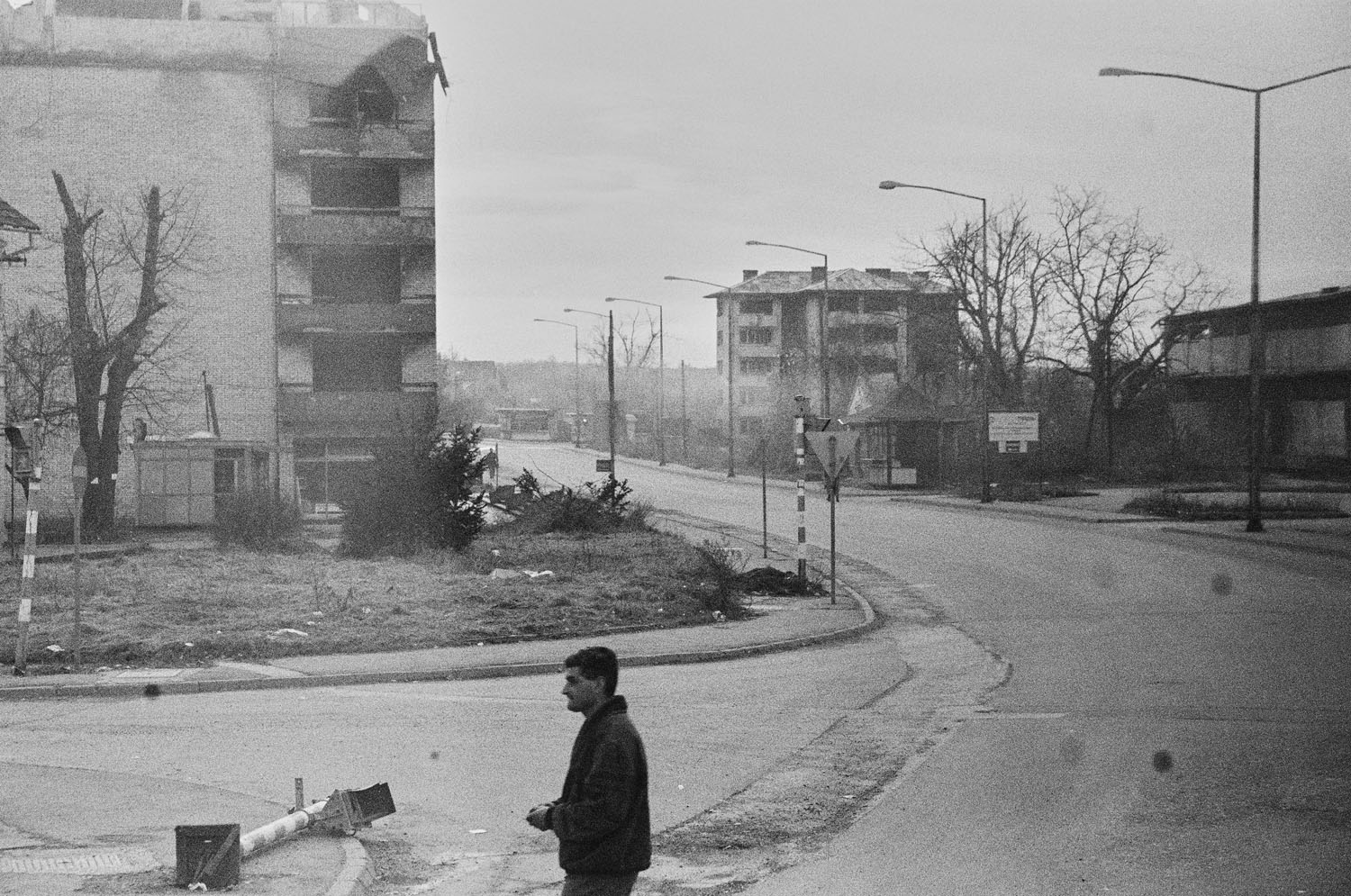
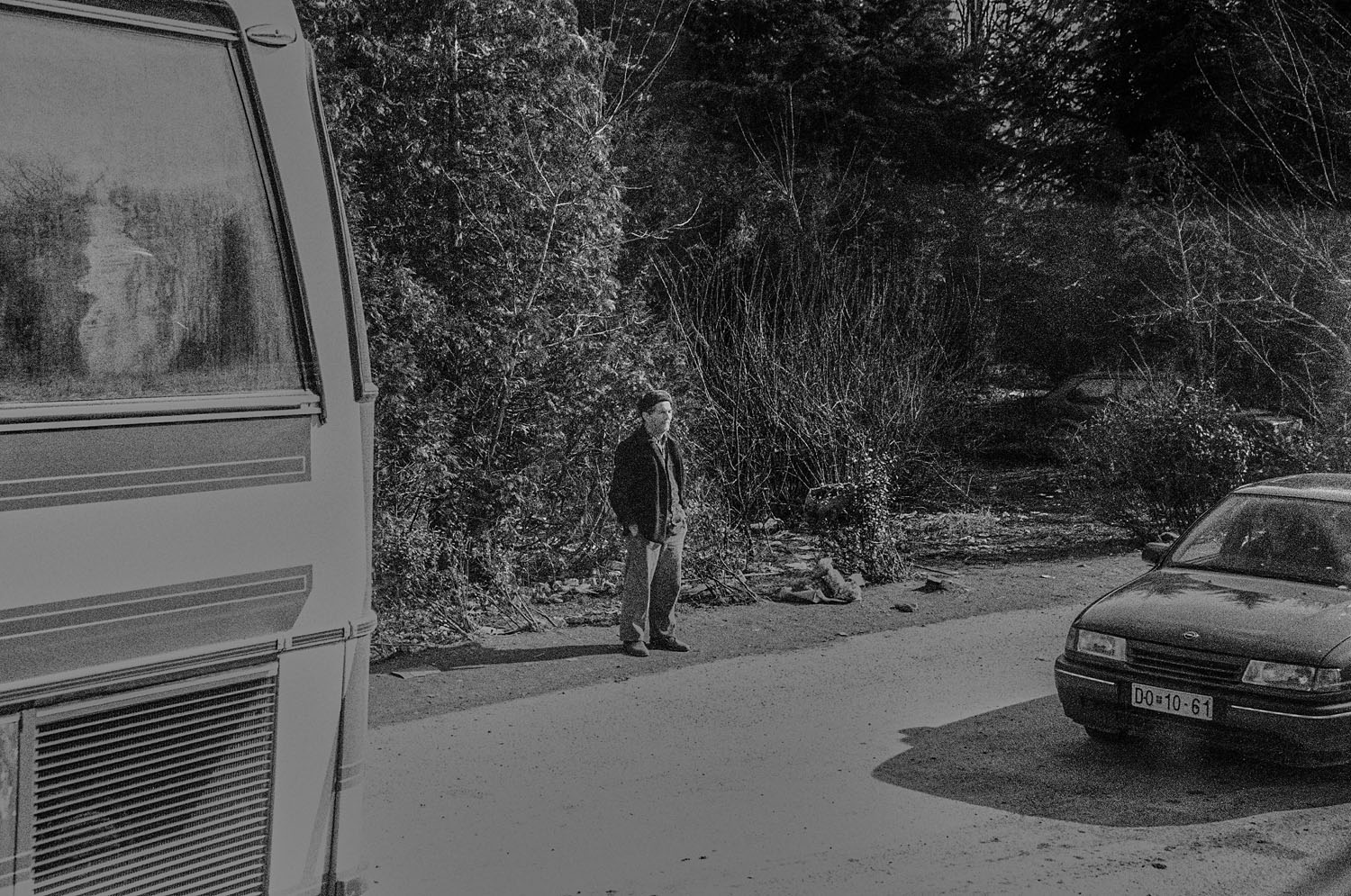
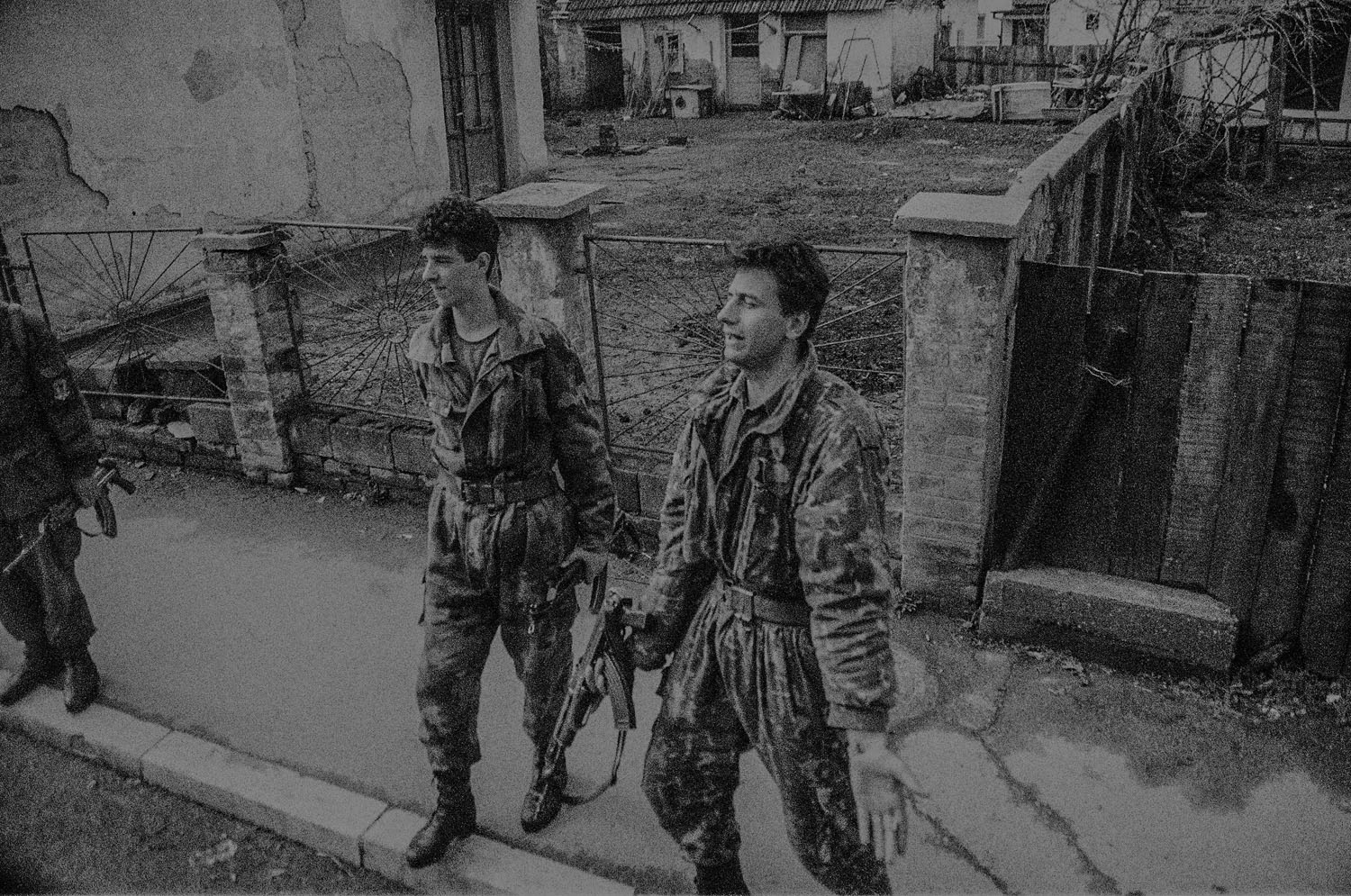
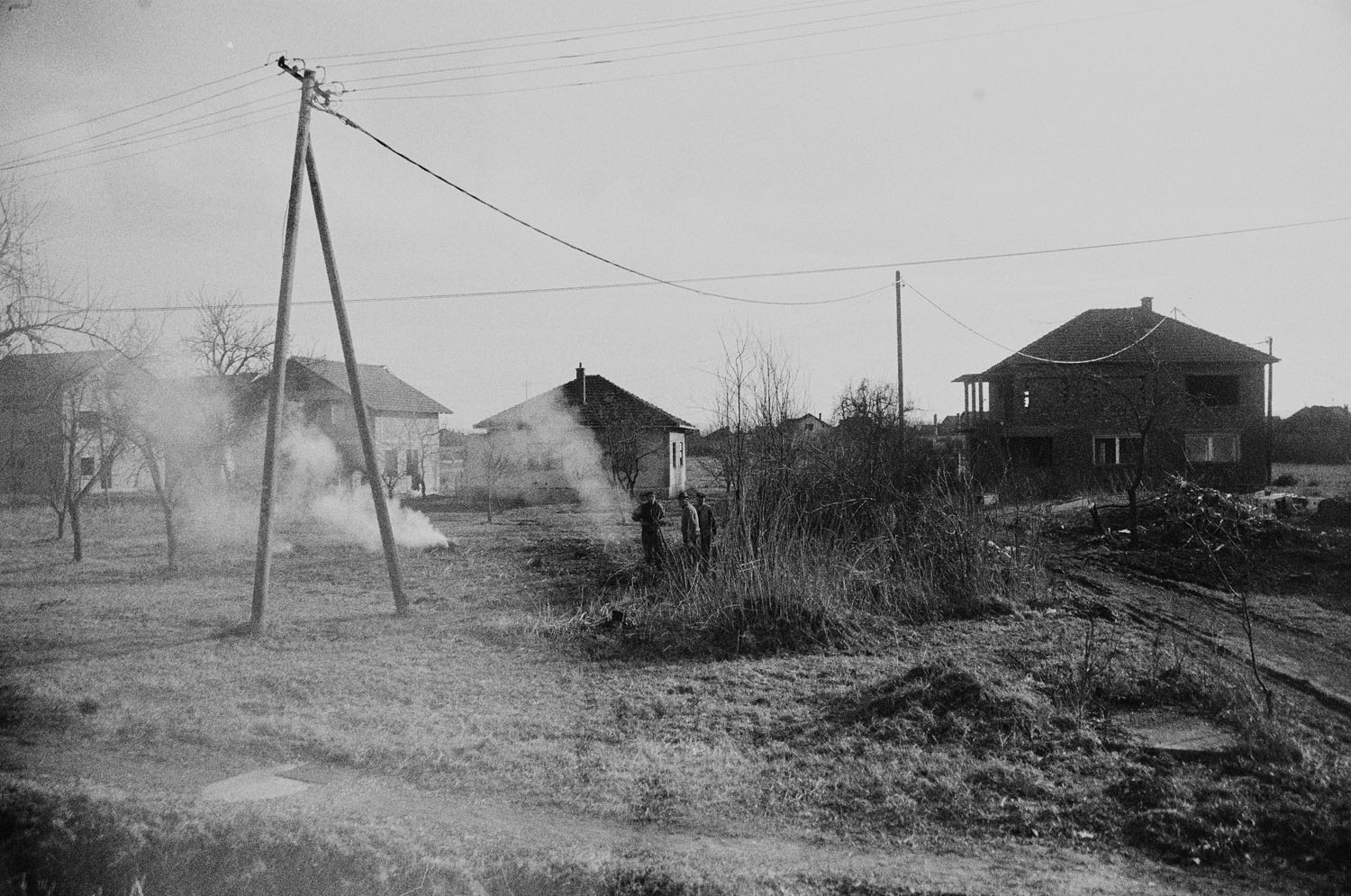
Despite, or perhaps because of, this lack of “professional” quality, the photographs are compelling. Disrupted by reflections from inside the bus and made fuzzy through visible grain, the black and white snapshots offer hastily snatched glimpses. A damaged tank in a deserted village, an artillery gun in an empty field, bonfire smoke drifting across a field where three men have paused their work to look towards the road. There is a sense of melancholy and disquiet underlying these fragments, which Kuzmanovic describes as “everyday images with this personal intimacy”.
In some, there is a sense of threat that appears closer to the surface. A soldier in a belted camo jumpsuit gestures towards the bus with one hand and an outstretched palm, while his weapon is held causally in the other. It is unclear if there is antagonism, or aggression behind the interaction. Kuzmanovic himself is not sure. “As far I can remember, for whatever reason he expected the bus to stop,” he says.
While all of the people he photographed were unknown to Kuzmanovic, there was one instance of connection through the bus window. A young man is stood, hands buried in his jacket pockets, near to a roadside structure decorated with flags and religious paintings of St George slaying the dragon. “This was at one of the checkpoints,” Kuzmanovic explained. “I was attracted by the scenery, maybe because I saw myself being him; it was like looking in a mirror. There were not many people on the streets except at the checkpoints, and it took a lot of courage for me to make that image. As we continued on our way, he noticed me taking the picture and started shouting.” Looking through the book, the reader encounters these brief moments before, like the bus and Kuzmanovic, moving on and leaving them behind.
Photos Miro Kuzmanovic took from a bus leaving the former Yugoslavia in 1992
The name of the book comes from a collection of notes by Yugoslavian novelist Ivo Andrić. An extract is included in the book that tells the story of a man who leaves home to set out on a dangerous journey into an uncertain future. Using an axe, the man carves signs into the trunks of trees by the roadside in order to find his way back. These signs may never be noticed, Andrić writes, or may not be understood, but making them can help with the unavoidable trials of life and remind people that they are neither alone, nor unique, in facing these difficulties.
It is easy to see the parallels with Kuzmanovic’s experience. The photographs he took from the bus window, like signs made by the roadside, are what compelled him to return. He explains: “I realised that I was carrying something with me all these years, something from the past that was greater than the present. I wanted to find out what I had recorded of my history. I think this a very universal longing for those displaced by conflict.”
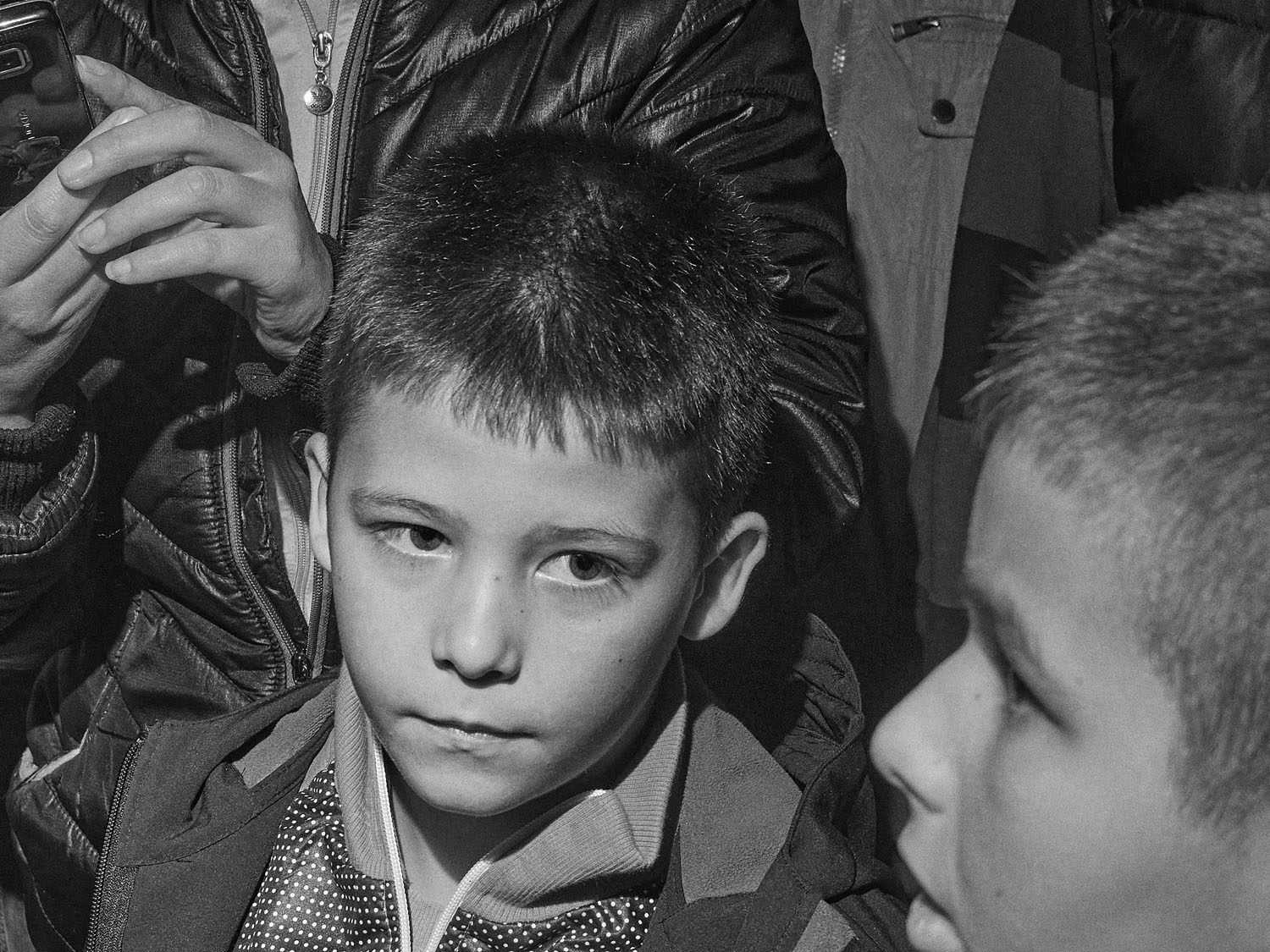
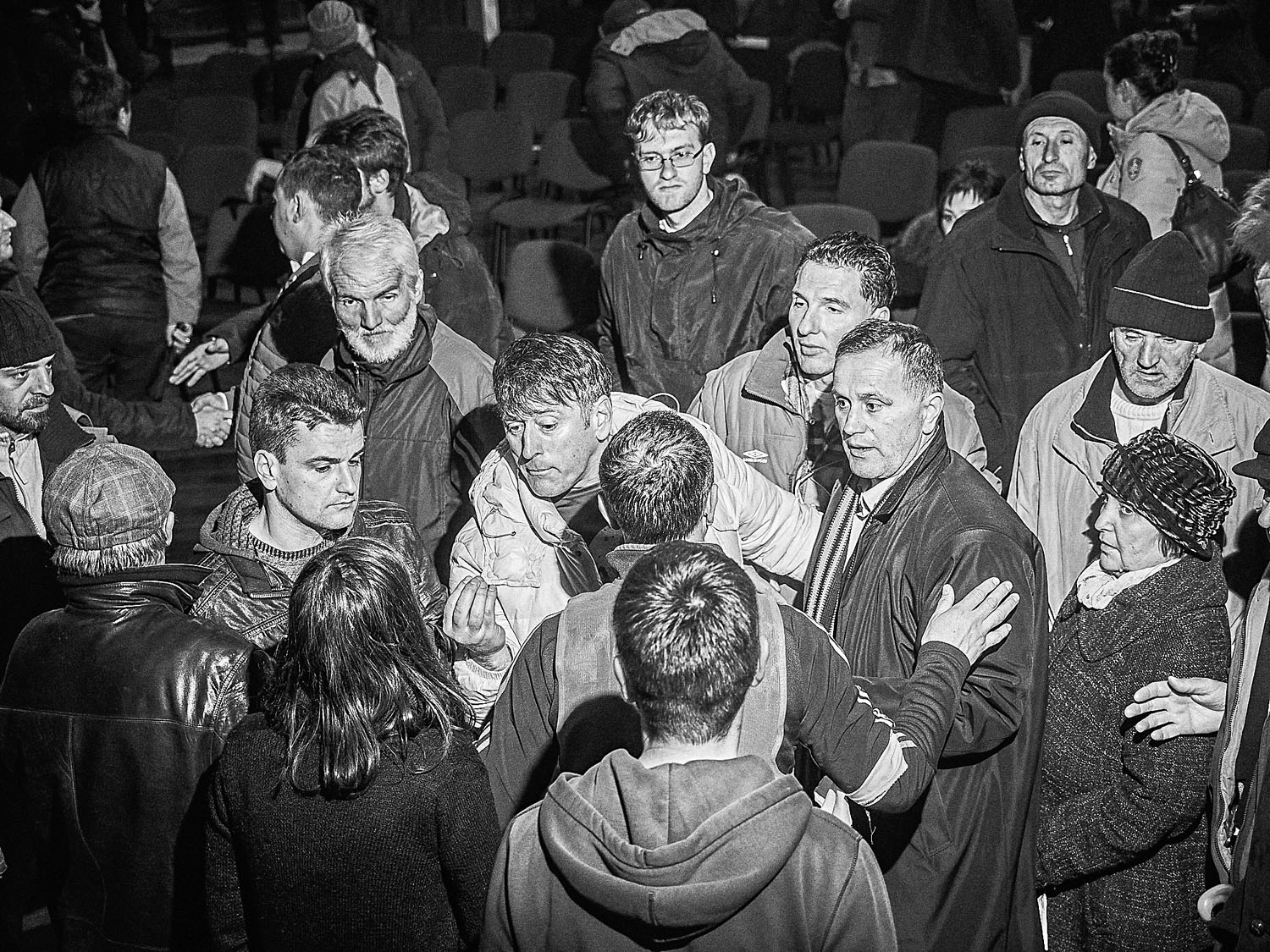
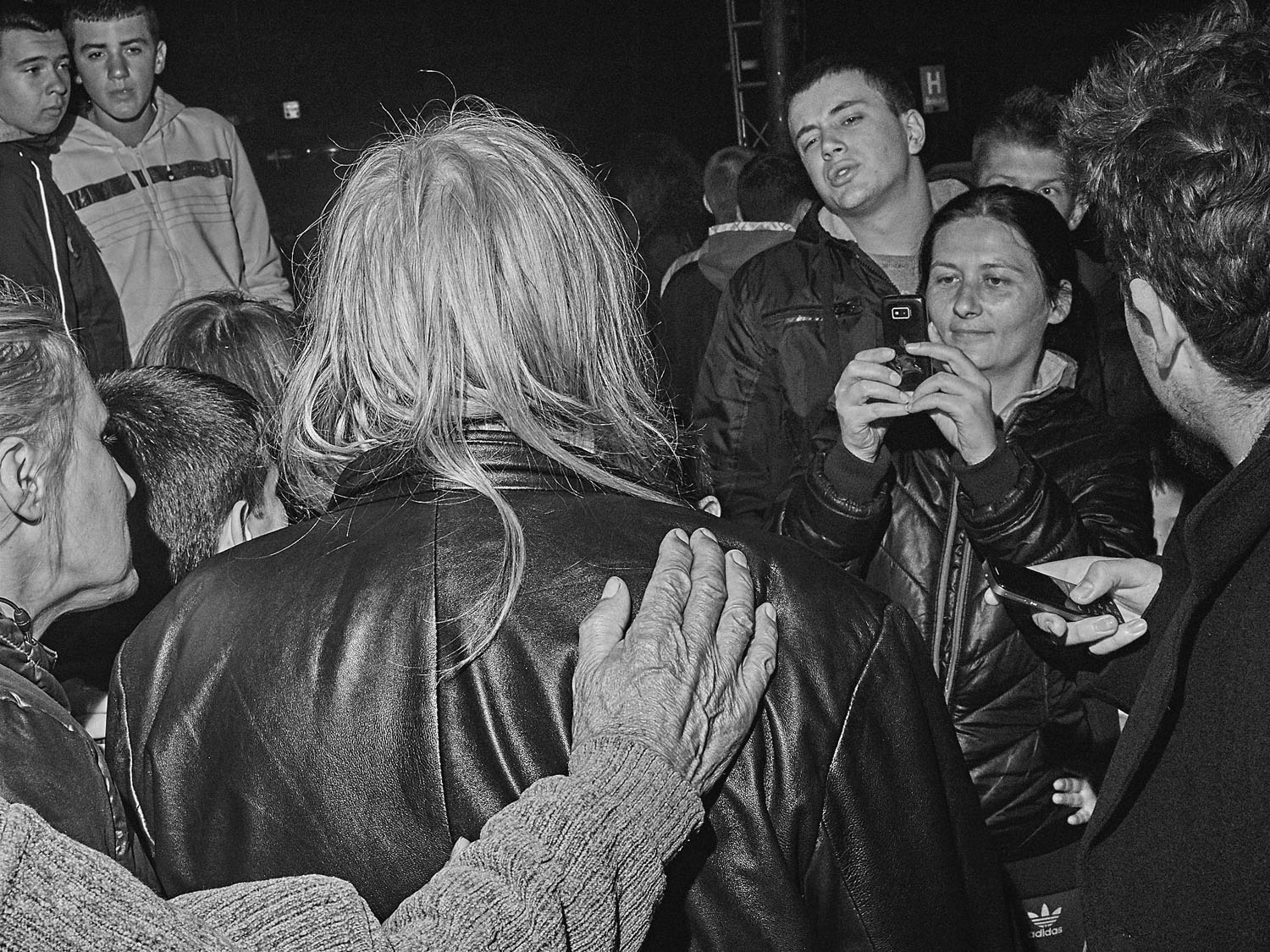
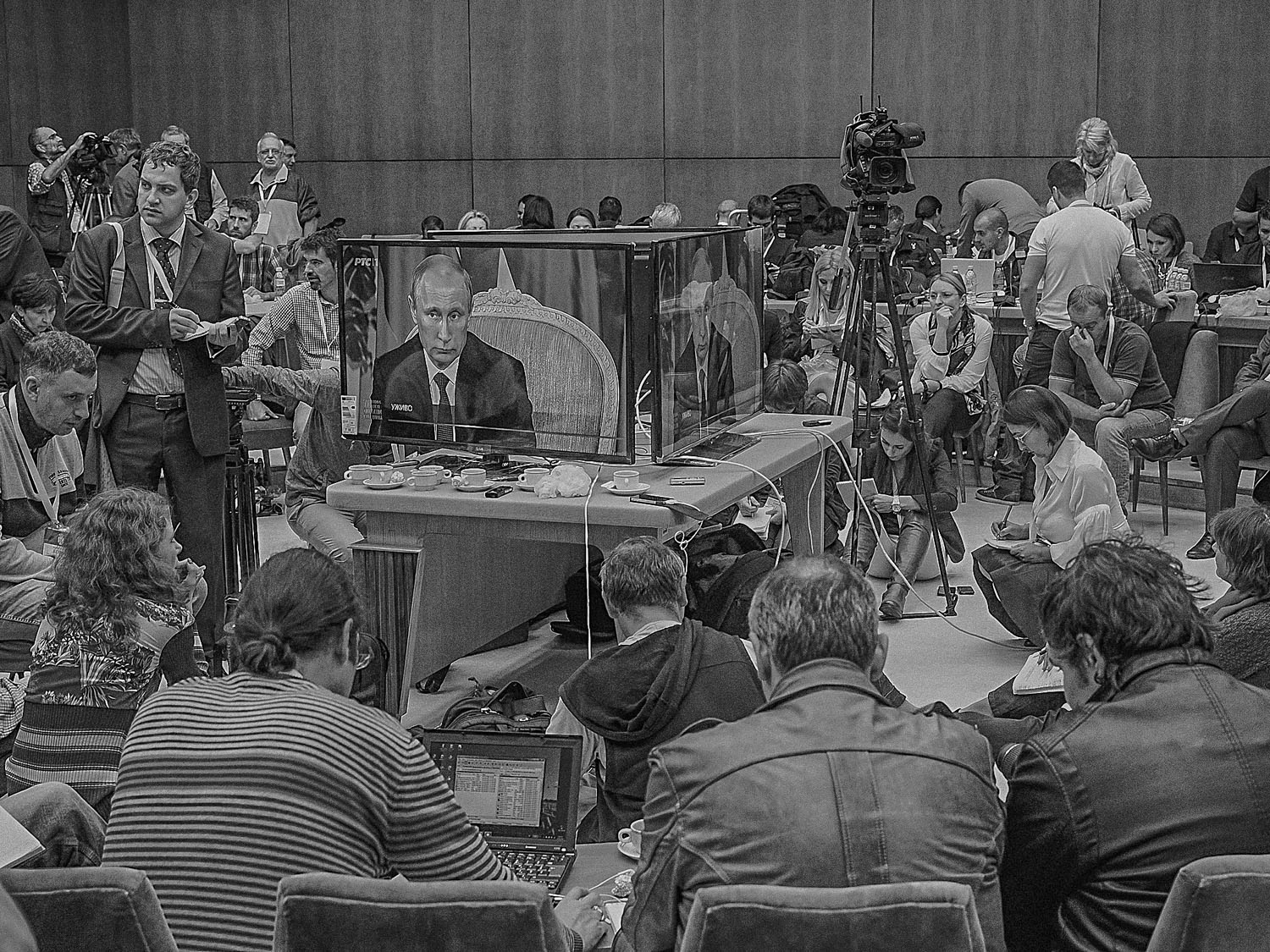
If the first section of the project represents departure, the second is a story of return, and the struggle to understand or recognise a former homeland. Between 2008 and 2017, Kuzmanovic travelled to Bosnia, Serbia, Croatia, and Kosovo, where he photographed landscapes, portraits, and architecture, as well as political and social events. In the book, these photographs are sometimes paired across double page spreads, so that they “interact on a visual level, but also leave the viewer with this feeling of confusion, disorientation, and the madness of a conflict and its aftermath”. Sequenced without captions, the photographs are at times ambiguous, creating an effect that Kuzmanovic hopes will challenge the viewer “to judge whether a given image represents a perpetrator or a victim, a moment during or after the war, and in the end, also what the images are telling us, in terms of truth.”
Kuzmanovic also researched war crimes and followed the International Criminal Tribunal in the former Yugoslavia. “The behaviour that I saw inside and outside of the courtroom made me realise that I didn’t understand my country,” he states. “I was desperately looking for signs, for evidence that [the people behind these crimes] were different. But it would be too easy to accept that war crimes are done by monsters who demonstrate pathological behaviour.” As part of this attempt to understand, Kuzmanovic created what he describes as “ritual snapshots” — images reproduced from diverse sources such as newspapers, court records, victim portraits, and videos. His process of reproduction and remediation demonstrates how such images, and the ideologies they represent, are vulnerable to processes of deterioration, misinterpretation, and co-option into conflicting narratives.
Putting together the dummy was a necessarily slow and highly personal process, taking Kuzmanovic almost five years. At points, he questioned who the book was for: himself or the viewer. “In the end,” he reflects, “it’s a personal account of leaving and losing your home. That was, and is, very omnipresent in the time we’re living in when you think about the refugee crisis in Europe.” Rather than providing any conclusive message or resolution, Signs by the Roadside is an autobiographical account of leaving, returning, and searching for answers, that hints at multiple narratives and ways forward. The reader joins Kuzmanovic in a process of trying to interpret the signs they encounter — whether they be found in religious or political iconography, murals painted on walls, a landscape of wind flattened grass or the expressions passing across people’s faces.
